Climate-Smart Livestock Production in Ecuador: climate change adaptation for small and medium-sized livestock producers, with special focus on the Imbabura and Loja provinces
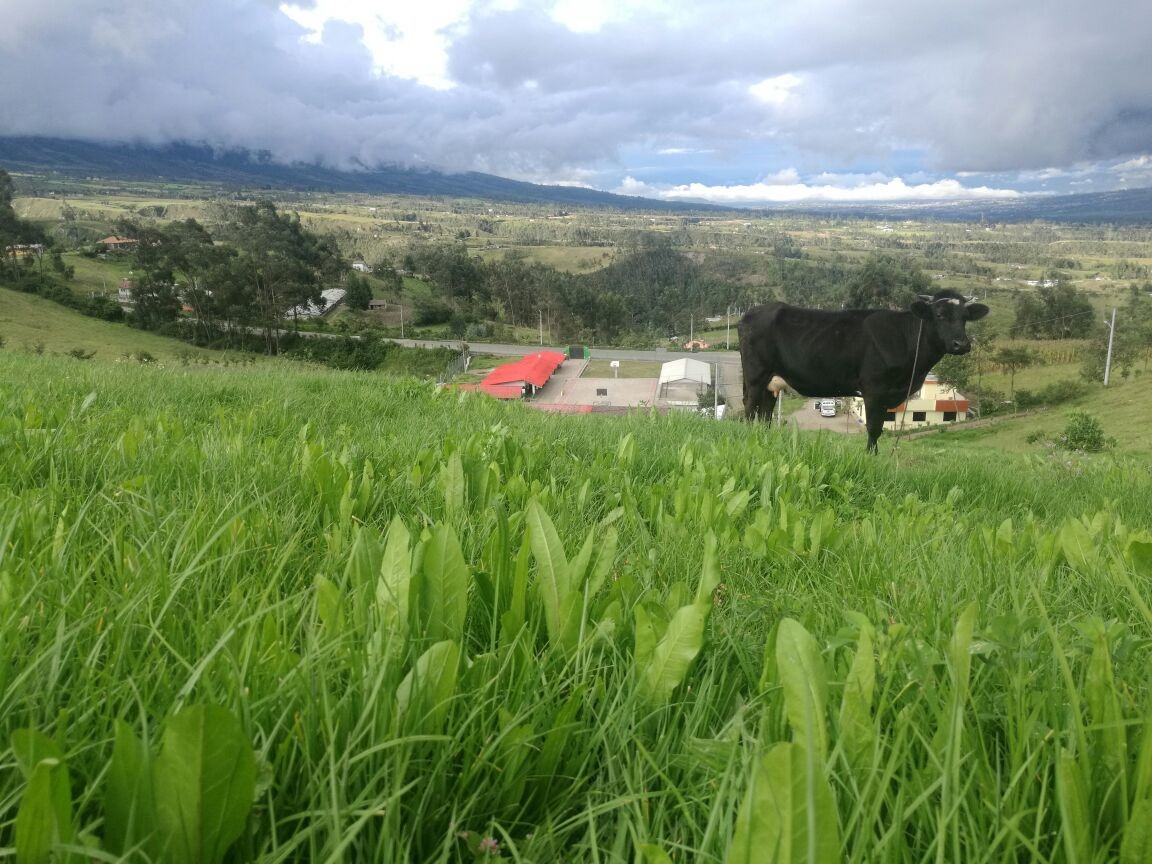
Summary
The Climate-Smart Livestock Production project (GCI by its spanish acronym) in Ecuador was implemented from 2016 to 2020 at various locations in the north of the Andean region. Its aim was to reduce the climate vulnerability of the livestock production sector and communities and to help enhancing their adaptive capacities.
Small and medium-scale livestock production in the Ecuadorian Andes represents an important productive sector in constant expansion, providing sustenance and livelihoods to thousands of rural and urban households. However, the sector also contributes to reducing forest and paramo remnants, including their vital ecosystem services through extensive low-productivity grazing leading to the degradation of soil, water and biodiversity, and high greenhouse gas (GHG) emissions. Added to this is a high climate risk linked to increased temperatures, changes in rainfall patterns, and more frequent droughts and torrential rains, which make these systems highly vulnerable. The implementation of the GCI approach and practices were there focused on reducing this vulnerability and strengthening the adaptive capacity of farming systems and livelihoods by sustainably increasing productivity, while also reducing GHG emissions.
Through the GCI project, a set of locally tailored practices were designed and implemented in response to the needs of each area (e.g., paddock gauging; rotational grazing: electric fencing; pasture management and renewal; implementation of forage mixtures; forage banks; herd health and reproductive management; establishment of silvopastures; pruning and thinning; etc.); monitoring and evaluation tools; training and capacity building processes; empowerment of women; access to incentives and financial mechanisms; promotion of public policies and strengthening of livestock governance.
(Por favor consulte el documento adjunto para la versión en ESPAÑOL)
Overview
- Location:
- Implementation sites:
- Single country
- Multiple locations
- Mountain region:
- Northern Andes
- Province:
- Imbabura, Loja, Manabí, Guayas, Santa Elena, Morona-Santiago, and Napo provinces.
- Site locations:
Imbabura province: Canton Urcuquí-Parroquia Buenos Aires)
Loja province: Cantons Gonzanamá- Parroquias Purunuma, Nambacola and Changaimina.
- Solution scale:
- Ecosystem type(s):
- Solution type(s):
- Sector(s):
- Climate impact(s) addressed:
- Impact time-scales:
- Co-benefits:
- Implementation timeline:
- 2016 - 2020
- Sendai targets:
Solution details
Main beneficiaries & outcomes
At the national level (7 provinces), the project benefited 1056 small and medium-sized livestock producers through 37 field schools. Of these, 347 were women (37%). In addition, 448 technicians from different government and local government institutions were trained in different GCI topics, 43% of them women.
Planning and implementation
Food and Agriculture Organization of the United Nations (FAO): Implementing and executing agency of the Global Environment Facility (GEF). Its main role was to increase sustainable food security through the dissemination and promotion of sustainable livestock policies and strategies. It was also responsible for extracting lessons, and systematizing good practices and recommendations for replication and scaling up to other projects in the country and the Andean Region.
Undersecretariat for Livestock Development of the Ministry of Agriculture and Livestock of Ecuador (MAG): Executing partner, responsible for implementing the national livestock sector policy, for which it directed resources and institutional competencies.
Ministry of Environment and Water of Ecuador (MAAE): Executing partner responsible for technical and policy coordination to create synergies between baseline programs and project activities. It also promoted and implemented climate change adaptation and mitigation policies; natural resource management; and strategies to combat desertification in the livestock sector, also channeling institutional resources and competencies.
Decentralized autonomous parish, municipal and provincial governments (GADs): Local counterparts for implementation, resource mobilization, monitoring and evaluation. Also responsible for promoting the inclusion of GCI in land use plans and development plans in their respective territories.
National and regional livestock associations: Implementing partners, focused on strengthening the livestock sector through sustainable production initiatives to improve the livelihoods of their members, as well as encouraging local markets and promoting access to GCI technologies.
Local organizations of small and medium-sized producers: Local promoters and direct beneficiaries of the improvements in living conditions and increased income. They also facilitated local producers’ access to sustainable technologies and services.
Local producers: direct beneficiaries who improved their living conditions, increased production and income. They gained access to GCI services and technologies, reducing climate risk and vulnerability, and increasing their adaptive capacity.
Finance
GEF: Cash donation for project preparation and implementation.
FAO, MAGAP, MAAE and beneficiaries: Co-financing in cash and in kind for project implementation.
Total budget (national level) at project closing: 26,012,613 USD, which included 3.85 million USD financed by GEF, and co-financing of 18.22 million USD contributed by MAG (56.4 %), MAAE (22.2 %), beneficiary farmers and producers (9.6 %), other governmental institutions (5.7 %), provincial, cantonal and parish decentralized autonomous governments (3.6%), and other key stakeholders, including unplanned cofinancing during project design. The budget was executed by FAO in line with project plans.
Clear and relevant objectives and indicators were used, which contributed positively to implementation. Among the main indicators used to evaluate the effectiveness of the different actions focused on CCA of small livestock producers, the following can be highlighted:
- Adaptation actions implemented within national/sub-national development frameworks.
- Climate-smart livestock approach (GCI in Spanish) incorporated in 5 Land Management Plans, 1 National GCI Strategy, and 5 Local Zoning Plans.
- Number and type of institutions with increased adaptive capacities to reduce risks and respond to climate variability in the livestock sector.
- Number of staff trained in CCA issues.
- % of selected groups that have adopted adaptive technologies by type of technology: i) pasture management: 10% (men and women); ii) animal and herd management: 5% (men and women); iii) water management: 10% (men and women); iv) supplementary feeding: 0%; and v) grazing management: 0%.
Innovation
- Establishment of a climate credit line for producers implementing GCI practices, through BanEcuador.
- Formal training of technicians from different government institutions (MAG and MAAE) through Universities, especially in the case of the provinces of Loja (National University of Loja), and Santa Elena (Santa Elena Peninsula State University (UPSE)).
- Local climate vulnerability assessments in each intervention province.
- Climate risk assessment (exposure, sensitivity and adaptive capacity) of the livestock sector at the national level.
- Zoning of pasture use at the national level and in each intervention province.
- Design and implementation of web tools for monitoring greenhouse gas emissions (productive and reproductive data, number and category of animals, feeding, manure management); and climate risk (monitoring of extreme temperature and precipitation events, pasture and herd management, irrigation infrastructure, access to water, pastures and crops, conservation areas).
- Training of livestock producers and implementation of GCI practices in 165 pilot farms through the signing of 3-year co-execution agreements, in which the producers committed to: implement GCI practices, participate in project training, use the materials and inputs provided by the project in a sustainable manner, and complement the investments to implement measures with their own resources. The practices implemented in the Andean provinces were: Paddock gauging; rotational grazing; Electric fencing; Optimal utilization point; Pasture management and renewal; Implementation of forage mixtures; Forage banks; Nutrient blocks, mineral salts; Forage conservation; Herd health and reproductive management; Establishment of silvopastures; Ecosystem conservation and restoration; Excreta and waste management; Plot irrigation; Drinking and feeding troughs; Pruning and thinning; Log management; and Good milking practices.
- Formulation of gender indicators to be incorporated into the project’s monitoring, reporting and verification system.
Performance evaluation
The FAO Evaluation Office, through the consulting team led by Doris Cordero and Gissela Moncayo, evaluated the project on the basis of the following evaluation criteria and indicators:
1. RELEVANCE: The project is aligned with local, provincial, national and international priorities and policies.
Indicators: Degree of alignment of project design, implementation and results with GEF, FAO and national priorities.
2. EFFECTIVENESS: Achievement of project results.
Indicators: Level of compliance (quantitative and qualitative) and quality of project outputs and outcomes; Level of contribution of the project activities and outputs to the achievement with the proposed outcomes and objectives.
3. EFFICIENCY: Project implementation and execution.
Indicators: Institutional/organizational structure; Coordination mechanisms among stakeholders; Evidence of the existence, quality and implementation of the communication strategy.
4. MONITORING AND EVALUATION (M&E)
Indicators: Evidence of the existence, quality and implementation of the M&E system; Analysis of consistency and use of the M&E system.
5. STAKEHOLDER PARTICIPATION AND ENGAGEMENT
Indicators: Evidence of the level of participation and empowerment of stakeholders (including private sector) during the project cycle; Evidence of the level of participation of indigenous communities and women in the project cycle.
6. VULNERABLE GROUPS: Gender and Indigenous Peoples
Indicators: Evidence of the existence, quality and implementation of the gender mainstreaming strategy in the different phases and activities of the project; Level of progress in the implementation of the gender mainstreaming strategy activities and monitoring of indicators; Level of contribution of the project to the objectives of the FAO Gender Equality Policy and the FAO Indigenous and Tribal Peoples Policy.
7. SUSTAINABILITY: Ability to continue to generate long-term benefits after the end of the project.
Indicators: Evidence of the existence, quality and implementation of an exit strategy; Level of appropriation by the GADs, MAG, MAAE and beneficiaries of the strategies, knowledge and practices developed under the project; Level of integration of the GCI approach in public policies (legal, regulatory, operational and financing instruments at the national, provincial and local levels); Evidence that the partnerships established will be maintained beyond the life of the project (financing).
8. PROGRESS TOWARDS IMPACT
Indicators: Level of development and appropriation of instruments and informatic tools to collect field data for the monitoring of GHG emissions on farms and measuring adaptive capacity; Evidence of the socioeconomic impact of the project on its beneficiaries.
9. LESSONS LEARNED.
Impacts: Obstacles and difficulties that have affected project implementation; Mechanisms for disseminating lessons learned and project recommendations.
Long term project sustainability and maintenance
The GCI approach and practices, including its mobile tools for monitoring and evaluation of climate risk and adaptive capacity, and of GHG emissions, have great potential to be used beyond the project’s implementation period. In this sense, the project was able to anchor the GCI approach in public policy instruments, demonstrating the commitment of the MAG, the MAAE, BanEcuador and the Loja provincial government to ensure the sustainability of the environmental, social, institutional and financial results achieved. The commitment of state institutions is evident, especially from the MAG and MAAE in continuing to promote the GCI model through its Nationally Determined Contribution (NDC), submitted to the United Nations Framework Convention on Climate Change (UNFCCC), as a line of action for the agriculture sector, including compliance with a national target for reducing GHG emissions from livestock farming. The creation of the green credit line from BanEcuador to promote GCI is also a clear sign of institutional commitment at the highest level. Likewise, the development of the 2030 sustainable livestock strategy proposal and the Nationally Appropriate Mitigation Action (NAMA) proposal for the livestock sector, jointly with MAG and MAAE, reflect institutional efforts to continue promoting the GCI approach, and even to expand it to other provinces of the country. Additionally, the integration of the GCI approach in the State Policy Proposal for Ecuadorian Agriculture 2020-2030, presented by the MAG to the Presidency of the Republic, is also evidence of the commitment assumed by this ministry to proceed with GCI.
At the producer level, according to their own opinion, a continuation of the GCI approach and practices can be visualized given that through these practices, productivity increases have been achieved, both in meat and milk, contributing to the food security of producers and other groups of influence. Moreover, they have also observed tangible environmental benefits such as improvements in soil quality, pastures (biomass productivity increases of up to 50% with forage mixes and improved pastures in Loja) and access to water (pilot farms have collection, storage and distribution systems that they did not have before). The project’s contribution to the organization and empowerment of farmer groups and associations, through the creation of savings banks and CSAs, and the signing of co-execution agreements in which farmers committed to complement the investments needed for the implementation of GCI practices, and to invest from their own resources for the creation of savings banks and CSAs, demonstrate the farmers’ commitment to continue implementing the GCI approach on their farms.
Capacities for design and implementation
Knowledge
Based on the participation, experience and traditional knowledge of livestock and natural resource management of local populations, the project has carried out vulnerability assessments (exposure, sensitivity and adaptive capacity), climate risk evaluations, zoning for pasture use, and measurement of GHG emissions from livestock activities in each province of intervention. Later, using this data and the information from the socioeconomic-environmental needs of each locality, the project has trained and implemented 75 different GCI practices in 12 categories: (i) Farm Resource Planning and Optimization; (ii) Feeding; (iii) Nutrition; (iv) Animal Management; (v) Animal Health and Welfare; (vi) Genetic Improvement and Reproduction; (vii) Conservation and Restoration; (viii) Management to Reduce Conflict with Wildlife; (ix) Agrochemical and Veterinary Inputs Management; (x) Livestock Waste Management; (xi) Organic and Inorganic Solid Waste Management; (xii) Water Management and Treatment.
Technology
The various GCI practices implemented in the Andean zone of the project have provided access to information on sustainable livestock management techniques, including financial aspects. At the same time, it has also implied the provision, co-financed by the producers themselves, of basic productive infrastructures such as stables, reservoirs and tanks for water storage and harvesting, pressurized plot irrigation systems, electric fences, drinking troughs and feeding troughs. Access to information and infrastructure in both Imbabura and Loja was related to the implementation of the following practices: silvopastoral systems; forage conservation; water management; herd health and reproductive management; pasture management; organic fertilizers; livestock infrastructure, conservation of natural remnants; planning tools, forage banks, protein and/or energy; feed supplementation; division of paddocks; fertilization and/or liming of paddocks; good milking practices; excreta management; release of areas for restoration; livestock byproducts, genetics(only in Loja).
An additional outcome of the project was the design and implementation of two mobile tools to monitor and evaluate at the farm level and in real time: i) GCI practices, climate risk and adaptive capacity of the systems, and ii) GHG emissions. Producers, technicians from local governments and institutions, private enterprises, some universities, and project staff were trained in the management and implementation of these applications. The first tool takes into account 37 indicators that predict climate risk and the adaptive capacity of the livestock sector in the project’s provinces of influence. Through this application, producers can enter data relating to their systems and obtain a risk assessment and an explanation of the best practices that can be implemented on their farms to reduce risks. The second tool allows monitoring GHG emissions by analyzing data on livestock production, reproduction and feeding. It predicts the intensity of emissions from milk and meat production and identifies best practices to reduce emissions without reducing the productivity of the livestock system.
Political / Legal
Vulnerability and implementation evaluations of GCI practices, including mobile tools, allowed for capacity building in different institutions, especially for local stakeholders from MAG and MAAE, local governments (parish, cantonal and provincial) and organizations from the livestock sector. In order to strengthen institutional and governance capacities, the project provided technical assistance to update a number of territorial management plans, placing special emphasis on the GCI approach and practices identified for each target area. The project also contributed to the creation of provincial livestock farmers’ networks (Napo and Manabí) and the Loja Livestock Roundtable. Furthermore, the National University of Loja (UNL) has incorporated some of the GCI approach topics in its training program on risk management, CCA, and impact mitigation.
An important aspect to highlight regarding institutional strengthening and the generation of public policy for CCA is the incorporation of the GCI approach in the State Policy Proposal for Ecuadorian Agriculture 2020-2030, which will guide the country’s agricultural policy over the next decade.
Institutional
Since its design, this project sought to incorporate all stakeholders involved in the small and medium-scale livestock sector. Coordination with the main ministries involved with the livestock sector, such as MAG and MAAE (co-execution partners) was constant until the end of implementation. In the case of MAG, inter-institutional coordination took place through the Undersecretariat of Livestock Development and the Ecuadorian Agency for Agro Quality Assurance (AGROCALIDAD) (national sanitary, phytosanitary and food safety authority), which facilitated the promotion of decision-making to promote policy decisions that allowed the implementation of GCI practices, focused especially on increasing systemic productivity and enhancing the sustainable use of productive resources and agrobiodiversity. Coordination with the MAAE, the ministry that promotes CC adaptation and mitigation policies, natural resource management, and strategies to combat desertification in the agricultural sector, was framed within the National Climate Change Strategy (2012-2025), which prioritizes the agriculture sector (and other land uses), through the Sustainable Livestock Program, the Program to Combat Desertification, the Adaptation and Food Security Program, and ecosystems, through the Sustainable Livestock Program, the Program to Combat Desertification, the Adaptation and Food Security Program; and ecosystems, through the National REDD+ Program, adaptation to glacier retreat and conservation of paramos.
Actions for territorial implementation were coordinated with the decentralized autonomous governments (GADs), through their competencies to strengthen governance and decision making in the agricultural sector. This was reflected in the Territorial Management Plans (PDOTs), where the GCI project was able to involve the participating provincial and parish GADs in the adoption of the diverse GCI practices, and include them in their respective PDOTs, for financing and implementation. At the territorial level, the initiative also coordinated with national and regional livestock associations and local organizations of small and medium-scale producers to strengthen governance and decision-making on sustainable production, access to and promotion of local, subnational and national markets, and to promote access to GCI technologies.
Socio-cultural
Stakeholder mapping and analysis was carried out during the project design stage. The involvement of local stakeholders, represented in the different producer organizations or organized groups in the communities was key to achieve the planning, implementation and monitoring processes of GCI practices and other project activities, as in the case of climate vulnerability assessments for each target province; the assessment of climate risk (exposure, sensitivity and adaptive capacity) of the livestock sector at the national level, the zoning of pasture use at the national level and in each province; and the design and implementation of web tools for monitoring greenhouse gas emissions and climate risk, adapted to local contexts. Such participation in the processes of training and implementation of GCI practices in pilot farms and through field schools, was crucial to achieve short- and medium-term co-execution and co-financing agreements. Likewise, the involvement of women’s groups through the design and implementation of the gender equality strategy, focused on identifying socioeconomic-productive relationships in the intervention provinces, allowed women’s groups to be empowered, highlighting their importance in managing livestock systems and also integrating them in decision-making processes, training in GCI practices, climate credit financial mechanisms, and in agricultural service centers (CSA) and communal funds. Women’s economic empowerment was seen as a factor in balancing power relations and strengthening their participation in decision-making.
Outlook & Scalability
Barriers and adverse effects
No effects or negative impacts of the GCI approach and practices during the project implementation time were evident. However, among the main barriers to the implementation of this approach, we can mention the lack of access to markets, especially at the subnational and national levels, to guarantee the commercialization of the milk and meat production surplus. In this sense, it is necessary to strengthen strategic alliances with the private and the social and solidarity economy sector, increase in added value and access to direct markets. Although mobile applications have great potential for monitoring and evaluating the different GCI practices, allowing to establish climate risk, adaptive capacity, and GHG emission levels from livestock systems, their applicability may be limited due to the high socioeconomic, connectivity and educational limitations, persistent in rural areas of the country. The lack of vision, political will, incentives and constant financing for the implementation of GCI as part of the CCA measures, both by the central government, and especially by local governments that were not part of the project, are shown as barriers that can limit the scalability and replicability of the GCI.
Transformation and future outlook
The different GCI practices carried out in 29 pilot farms in Imbabura, such as pasture renewal, forage conservation (silage), establishment of protein banks (brassica), oats and vetch planting, irrigation systems (to optimize water resources, reduce climate vulnerability and increase pasture, milk and meat production), water harvesting systems and/or rotational grazing, have allowed the conservation of 53 ha of forest remnants (an average of 5 ha per farm) and reduce pressure on forests and paramos. The implementation of live fences with native tree species, such as alder (Alnus acuminata), yellow elder (Tecoma stans), cedar (Cedrela odorata), tara (Caesalpinia spinosa), black cherry (Prunus serotina), acacia (Acacia sp. ), and motilón (Hyeronima macrocarpa), has increased vegetation cover by up to 40%, representing a significant progress for adaptation and mitigation thanks to all the socioeconomic-environmental benefits that this entails.
In Loja, the GCI practices implemented in 30 pilot farms, in particular the construction of water storage systems and implementation of pressurized irrigation systems for water optimization and climate vulnerability reduction, have allowed the planting of improved pastures and pasture grasses, the improvement of grasslands, the establishment of energy and protein banks, and the cultivation of corn for fodder conservation purposes. Moreover, biomass productivity increases of up to 50% have been achieved with forage mixtures and natural pastures of higher nutritional quality, with protein levels of 14% to 18%. In addition, we have been able to increase tree cover on the farms through the implementation of live fences, which in some cases have increased by up to 80%. All these practices have made it possible to sustain animal feeding, especially in the most critical months (June-December), guaranteeing the feeding of cattle, as well as establishing the producer’s commitment to release and conserve the natural remnants.
The different GCI activities, which focus mainly on improving production under climate-smart livestock management and intensive low-emission grazing, allow the reduction of the agricultural frontier through extensive grazing, promoting the ecosystemic recovery of forests and paramos. Similarly, the project has succeeded in conserving 3275 ha of forest remnants and restoring 436 ha through 165 pilot farms and 871 replica farms. In addition, it is estimated that GCI practices have led to a reduction of 50034 tCO₂eq of direct greenhouse gas emissions by 2020, with a projected reduction of 75271 tCO₂eq by 2021, while the implementation of pastures has sequestered 347582 tCO₂eq, an will reach 506848 tCO₂eq by 2021.
Potential for upscaling and replication
The GCI approach and practices have been incorporated in policy and financing tools, and in the PDOTs of some GADs, besides their tangible benefits in terms of increased milk and meat production and quality, and producers’ incomes. However, the moderate complexity of the approach, which integrates complex technical elements such as the monitoring of GHG emission reductions with the use of technology such as web tools, can be a limitation to scaling up and replication, in particular at the local and community level. Nevertheless, according to the stakeholders involved ( producers, government and FAO-Ecuador staff) as well as FAO officials worldwide, the project is considered a role model due to the positive lessons learned in terms of training, inter-institutional articulation, and the development of public policies to achieve the intended results. This led to the dissemination of lessons, experiences and tools through the participation of the project staff in exchanges with other teams and projects in Colombia, Uruguay, Peru, and the Dominican Republic, as well as in Europe and Asia.
Finally
Contacts of key institutional partners involved with the solution planning and implementation
FAO Ecuador: https://www.fao.org/ecuador/es/
Johanna Flores, Representante Asistente – Programa, FAO Ecuador. [email protected]
Key references/links
Albán, S. (2018). GÉNERO Y GANADERÍA CLIMÁTICAMENTE INTELIGENTE EN ECUADOR. Quito, Ecuador.
Arias, R., Cueva, M., Valverde, N., Gonzaga, R., Jiménez, C., Figueroa, C., & López, O. (2017). “DIAGNÓSTICO RURAL PARTICIPATIVO -DRP- DE LOS SISTEMAS DE PRODUCCIÓN GANADERO DE LAS ORGANIZACIONES DE PRODUCCIÓN AGROPECUARIA DE LA PARROQUIA CHANGAIMINA, QUE PARTICIPAN DEL PROYECTO GCI”. Loja, Ecuador.
Arias, R., Cueva, M., Valverde, N., Gonzaga, R., Jiménez, C., Figueroa, C., . . . Jiménez, J. (2017). Sistematización de taller: “ANÁLISIS DE VULNERABILIDAD LOCAL AL CAMBIO CLIMÁTICO DEL SECTOR GANADERO EN LAS ZONAS DE IMPLEMENTACIÓN DEL PROYECTO GCI EN LA PROVINCIA DE LOJA”, “HERRAMIENTA CRISTAL”. Loja, Ecuador.
Avalos, D., & Jiménez, J. (2017). Memoria Técnica: TALLER DIAGNÓSTICO RURAL PARTICIPATIVO DEL SECTOR GANADERO EN LA PARROQUIA BUENOS AIRES, CANTÓN URCUQUÍ, PROVINCIA DE IMBABURA. Ibarra, Ecuador.
Avalos, D., & Salvador, D. (2017). Memoria Técnica: TALLER COMUNITARIO PARTICIPATIVO PARA EL ANÁLISIS DE VULNERABILIDAD LOCAL AL CAMBIO CLIMÁTICO DE LOS SISTEMAS PRODUCTIVOS DE PEQUEÑOS GANADEROS EN LA PARROQUIA BUENOS AIRES, CANTÓN URCUQUÍ, PROVINCIA DE IMBABURA. Ibarra, Ecuador.
FAO. (2020). Evaluation of “Promotion of climate-smart livestock management integrating reversion of land degradation and reduction of desertification risks in vulnerable provinces”: Anexo 5. Datos financieros del proyecto, incluyendo el cofinanciamiento. Roma, Italia: FAO.
FAO. (2020). Evaluation of “Promotion of climate-smart livestock management integrating reversion of land degradation and reduction of desertification risks in vulnerable provinces”: Anexo 1. Matriz de evaluación. Roma, Italia: FAO.
FAO. (2020). Evaluation of “Promotion of climate-smart livestock management integrating reversion of land degradation and reduction of desertification risks in vulnerable provinces”. Rome, Italy: FAO.
FAO, & FMAM. (2015). PRODOC Proyecto GCI Ecuador.
FAO, & GCI. (2018). Ganadería Climáticamente Inteligente en Ecuador: Integrando la reversión de la degradación de tierras y reduciendo los riesgos de desertificación en provincias vulnerables. Retrieved from http://www.ganaderiaclimaticamenteinteligente.com/index.php
GCI. (2018). Ficha Técnica: CARACTERIZACIÓN Y VULNERABILIDAD CLIMÁTICA DEL SECTOR GANADERO EN ZONAS DE INTERVENCIÒN DEL PROYECTO GCI PROVINCIA DE LOJA. Retrieved from http://www.ganaderiaclimaticamenteinteligente.com/documentos/Ficha%20T%C3%A9cnica%20Vulnerabilidad%20Local_Loja.pdf
MAG, MAAE, & FAO. (2019). Relaciones de género en los sistemas productivos de leche y carne. Proyecto Ganadería Climáticamente Inteligente (GCI). Quito, Ecuador.
MAG, MAAE, & FAO. (2019). Policy brief: Riesgo Climático Actual y Futuro del Sector Ganadero del Ecuador – Proyecto Ganadería Climaticamente Inteligente (GCI). Quito, Ecuador.
Rivera, A., & Avila, E. (2019). Documento Técnico: METODOLOGÍA DE ZONIFICACIÓN PARA USO DE PASTOS EN LAS PROVINCIAS DE INTERVENCIÓN DEL PROYECTO GCI. Quito, Ecuador.
Sangoluisa, P., Merino, J., Torres, J., & Rivera, A. (2019). Climate Smart Livestock: The interaction between mitigation, adaptation and efficient management practices in Ecuador. Retrieved from https://www.researchgate.net/publication/337001789_Climate_Smart_Livestock_The_interaction_between_mitigation_adaptation_and_efficient_management_practices_in_Ecuador
Sangoluisa, P., Torres, J., Jiménez, J., & Quiroz, D. (2020). Proyecto GCI: Monitoreo de emisiones de gases de efecto invernadero, riesgo climático y productividad. Quito, Ecuador: FAO.
Torres, J. (2020). ANÁLISIS NACIONAL DEL RIESGO CLIMÁTICO DEL SECTOR GANADERO DEL ECUADOR. Quito, Ecuador.





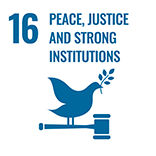
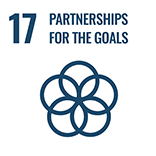


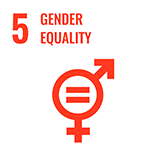
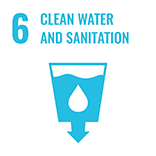

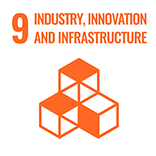
(0) Comments
There is no content